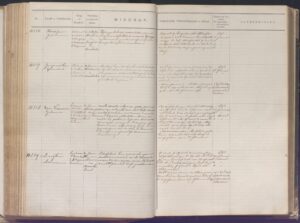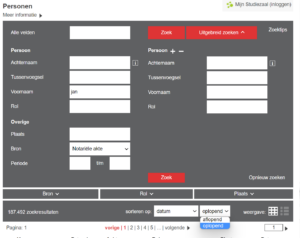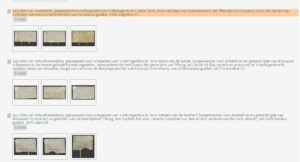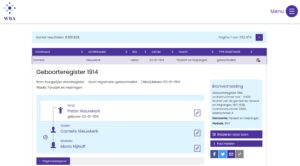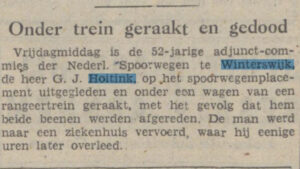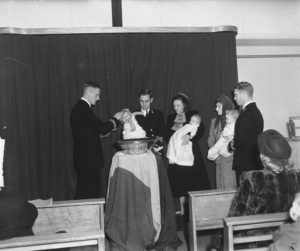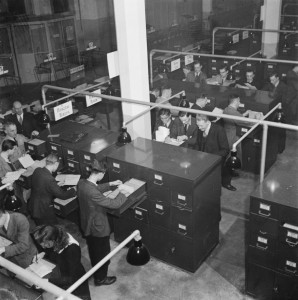You may encounter the Dutch word rol (role) in two ways in genealogy: In archival descriptions of records, a rol is a list, for examples of all the cases the court heard that year. In genealogical search forms, rol indicates the role of the person you are searching for in the record. For example, searching for a person with the role bruidegom (groom) will only find results where the search terms apply to someone indexed as a groom. … [Read more...]
Dutch term – Oplopend and Aflopend
Oplopend means ascending, aflopend means descending. You may come across the terms in search genealogical search pages, to sort the results. … [Read more...]
Quick tip – Search finding aids as well as indexes
Archives have different types of information on their website. The genealogical indexes are often found in a different section than the finding aids with the archival descriptions or catalogs. These descripts are often quite generic and describe whole series, like minutes of court records, incoming correspondence, or tax records. If you are lucky, the archival descriptions in the finding aids will also include names of people. Some archivists have made the effort to add the names of parties to … [Read more...]
Dutch term – Bladeren
Bladeren means to browse, to turn the pages of a book. You may encounter the term on a button or link when you are using a genealogical website where the index is attached to the whole book rather than to the specific page. By clicking "Bladeren," you will open the book and can look up the page using the details in the index. … [Read more...]
Quick tip – Use “PROX” in Delpher
Delpher is the website where you can find newspapers, magazines, and books published in the Netherlands. Because of the huge amount of sources on this website, you will often get many results. You can do a more specific search by searching for two terms that must appear near each other with the PROX parameter. Examples: Hoitink PROX Nijkerken (combining the last names of an ancestral couple) Hoitink PROX Winterswijk (last name + place of residence) Hoitink PROX Berkstraat (last … [Read more...]
Quick tip – Patronymics are Often Misindexed
Before 1811, in some parts of the Netherlands, people went by patronymics only. These are names derived from the father's name, like Jansen = son of Jan and Pietersen = son of Pieter. Let's say we have a baptismal record mentioning a child named Dirk, son of Jan Pietersen. No last name or patronymic was indicated for Dirk. His father would be indexed as Jan Pietersen, but Dirk himself could be indexed in a genealogical database three different ways: Dirk [no last name] Dirk Jansen … [Read more...]
Quick tip – Use the Dutch Genealogy Search function
Do you have a question about Dutch Genealogy? This website contains almost a thousand articles about Dutch sources, terms, and research strategies. Try searching for your term in the search box in the top right corner of the website. Examples: English versions of Dutch first names Using search engines How to find my immigrant ancestor in the Netherlands How to find the father of an illegitimate child How to capitalize Dutch names with prefixes Cheat sheet for records after … [Read more...]
Quick Tip – Repeat Searches Periodically
If you search a database and don't find the record you're looking for, try again later. Many databases get periodic updates or corrections, so a record that cannot be found today may be added tomorrow. For example, the people database at Archieven.nl often has new records as a result of indexing projects or because new archives decide to host their digital records there. … [Read more...]
Quick tip – It’s Never Been Easier to Verify Information
Did you find your ancestor in an online index or tree? It has never been easier to verify the information using original records. Here are five places where you can find images of online records. WieWasWie, database with civil registration records and much more. Not all have images attached. Requires a subscription to view the images. Persons index at Archieven.nl, database with indexes and images from many archives in the Netherlands. Open Archieven, contains indexes and scans of … [Read more...]
Quick tip – That index may not be complete
If you are using a genealogical database such as WieWasWie, beware that the record you are looking for may not be in the index. Either it may not exist (anymore, if ever), or it may not have been indexed yet. Most indexes provide a table of contents that show which records have been included. If you don't find the record you are looking for, check the contents to make sure that the record should be there. If the record should be there, and you can't find it despite searching for … [Read more...]
